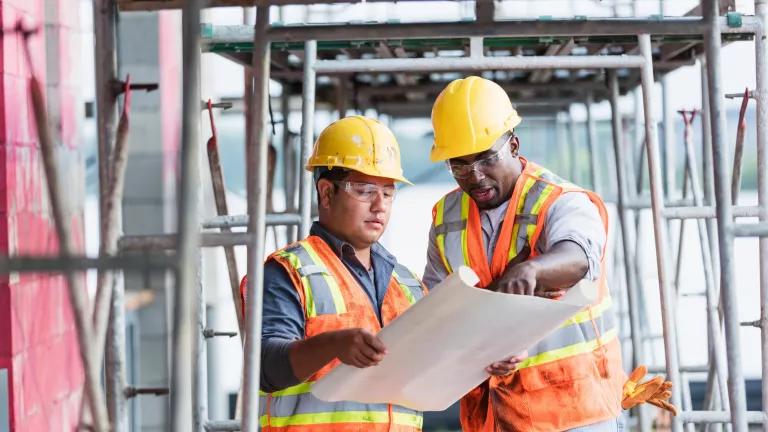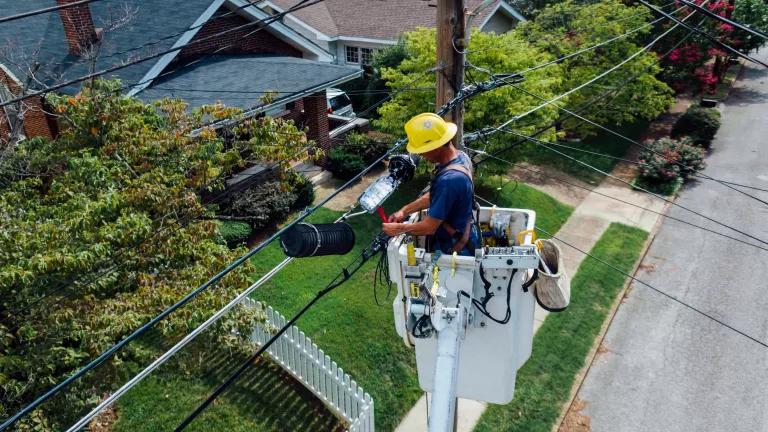Demystifying Energy Code Development
Building code development looks a lot different this year than it has in the past. Here is a breakdown of how things are going.

The International Code Council (ICC) manages the development of the model codes that inform how new buildings are constructed. This includes requirements for structural, mechanical, electrical, and other systems, and our personal favorite and today’s topic – the International Energy Conservation Code (IECC). Right now, the ICC and code experts are in the thick of developing the 2024 national model energy code – but code development looks a lot different this year than it has in the past. That’s because the organization that administers the process for developing the code made substantial changes to how it is created.
Instead of a procedure that is driven by the votes of thousands of local governmental members who work closely with the code daily, the process to develop the code now relies on decision-making by a committee. It’s still hard to say whether the committee decisions will result in a code that meets the needs of local governments and pushes toward a zero-carbon future. In many ways this new process is opaque and difficult for local officials to follow – yet the code remains an important policy tool to ensure that new homes do not waste energy. This is especially important for vulnerable communities and renters who have little say over the energy use of their homes.
Here is a breakdown of how things are going so far and how you can get involved.
The Process
Historically, the energy code has been developed through a public process where stakeholders submit proposed changes to the code, then come together to debate the proposals in front of a technical committee that makes recommendations for whether the proposals should move forward. Proponents could then make adjustments through a public comment process, with the final decisions resting on the vote of public officials. Starting with the development of the 2024 IECC, the ICC board changed the procedures so that it now follows a standards development process, where the final decisions rest with consensus committees, not governmental voting members. This was a controversial decision that NRDC and others did not support (including the majority of governmental voting members, as well as leading stakeholders like the American Institute of Architects, the American Council for an Energy Efficient Economy, the Institute for Market Transformation, and New Buildings Institute).
Under this new procedure, there are two committees which are responsible for the development of the 2024 IECC, one for the commercial provisions and one for the residential provisions. The process started with a call for committee members, which took place in the spring of 2021, with the board appointing members to the commercial and residential committees in the early summer of 2021. Code change proposals were submitted in the fall of 2021, with more than 250 proposed changes to the commercial code and more than 200 proposed changes to the residential code.
Over the past few months, our work kicked into gear on these main committees, as well as on various residential and commercial subcommittees. The subcommittees are comprised of committee and non-committee members, and they meet regularly to review code changes and develop recommendations for committee consideration. Once proposals are reviewed at the subcommittee level, they are discussed and voted upon at the full committee level. To date, committees have reviewed several proposals, with hot topics like electric vehicles, building electric readiness, solar energy generation, and others still to come.
Once all proposals are discussed and voted upon by the committees, they will be incorporated into Public Comment Draft #1, which will take the form of strike-through and underline language in the full code document. In the first public comment period, the full 2024 code (based on the 2021 IECC with proposed changes) will be open for comments. Said another way, there is another bite at the apple if you missed the October 2021 deadline for submission of a code change. The subcommittees and full committees will then review all comments and incorporate them into Public Comment Draft #2. Comments on the second public comment draft are limited to substantive text changes only, which would be once again reviewed by the subcommittees and full committees. Finally, the final code is voted upon by the residential and commercial committees and must be approved by two-thirds of the committee members.
Getting Involved
While state and local governmental members of the ICC no longer can vote, they can still wield tremendous power in the development of the code. Here we present four ways to be involved, starting with the lightest touch to potential deep engagement:
1. Sign on to public comment letters that show approval or disapproval
It is particularly important to weigh in on topic areas that are important to your jurisdiction, especially if you are interested in lowering carbon emissions within your community and ensuring a healthy, sustainable future. Many of the same organizations that were involved in getting information to governmental members in the development of the 2021 are still active and are planning to develop public comment letters during the public comment period. Signing on to public comment letters that show approval for provisions in the public comment draft is of particular value, since providing supportive comments will aid the committee in showing “consensus” on maintaining a provision in the code.
Through their Codes for Climate Initiative, New Buildings Institute provides regular updates on the code development process, which you can sign up for here.
2. Provide public comments with specific code changes
The full code document will be open for revision during the first public comment period. The committees have been working at a breakneck pace, and this opportunity to review and reflect on the work completed will be critical to ensure alignment between related sections, amend areas where the draft has not moved the needle on efficiency and carbon reductions far enough, and address concerns around implementation. These new proposed changes will benefit greatly from the input of governmental members who are tasked with adopting and enforcing these codes.
3. Listen in and provide testimony during committee meetings
Currently both the residential and commercial consensus committees are meeting every other week for three hours. These meetings are the final hearings for the current set of proposals and are open for both listening and participation by interested parties. By participating in the full committee meetings, jurisdictions can provide their input for consideration by the committees in the changes before them.
To get meeting information to attend the committee meetings sign up as an interested party with ICC to get updates, and follow agendas for the residential and commercial committees.
4. Listen in and provide testimony during subcommittee meetings
This schedule is more time consuming. Most subcommittees meet every other week for two hours each meeting to discuss the ins and outs of specific proposals, which are then discussed at the full committee meetings. The intensity of this level of involvement will vary based on the number of subcommittee meetings that an individual is interested in attending. In total there are 10 subcommittees that could be followed across both residential and commercial development.
To get meeting information to attend the subcommittee meetings sign up as an interested party with ICC. You can also follow the subcommittee meeting schedule here.
There is no doubt that this is a complex process, and we are all working to figure out the best way to get involved. Feel free to reach out to NRDC if you need more clarification – your voice matters to make new buildings more efficient!



